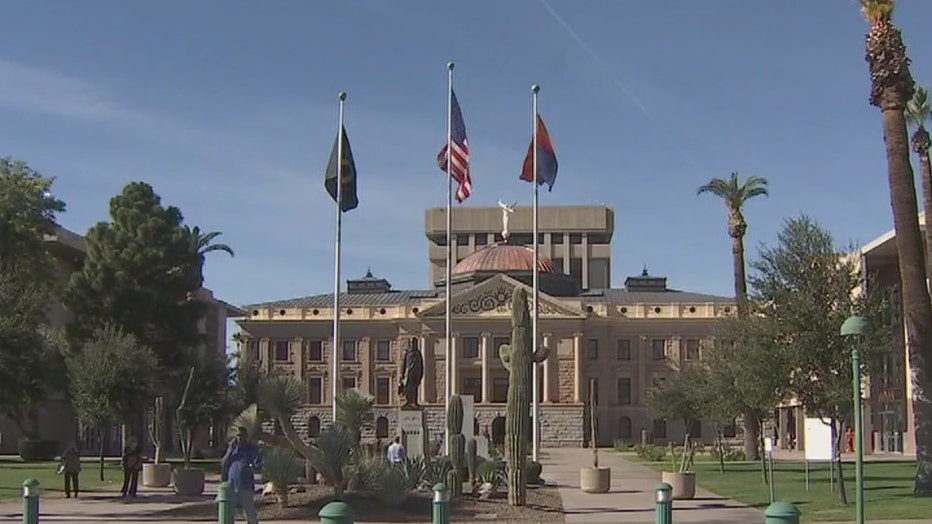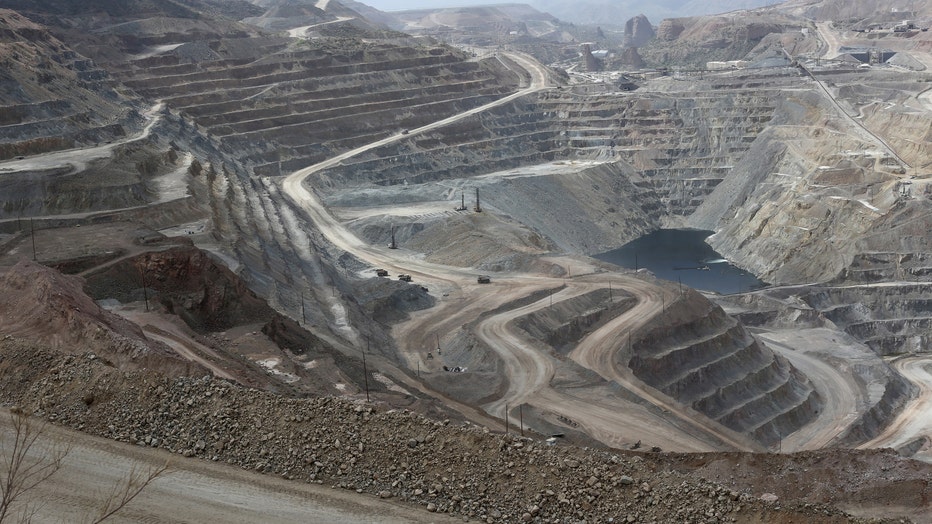2022 Election: What you should know about the vote for Arizona Mine Inspector
PHOENIX - By now, many of those who plan to vote in the November general election in Arizona know what candidates are on the ballot.
This election, people will be casting a vote for various statewide races, such as governor, secretary of state, and a position known as the mine Inspector.
Here's what you should know about this unique office.
Who's running for mine inspector this year?
The incumbent mine inspector, Republican Paul Marsh, is running for another term.
Marsh was appointed to the position by Gov. Doug Ducey in 2021, after the then-incumbent mine inspector, Joe Hart, resigned from office. Hart died in September.
A Democratic Party candidate named Trista Di Genova, according to the Arizona Secretary of State's Office, is running for the position as a write-in candidate.
What does a mine inspector do?
According to the Arizona State Mine Inspector's website, the state mine inspector has the duty to inspect, at least once every three months, every active underground mine in the state that employs 50 or more people, and at least once each year, every other mine.
"The inspector shall inspect the operation, conditions, safety appliances, machinery, equipment, sanitation and ventilation, the means of ingress and egress, the means taken to protect the lives, health and safety of the miners, the cause of accidents and deaths occurring at the mine, and the means taken to comply with provisions of this title," read a portion of the website.
Among other duties, the state mine inspector can also enter and inspect, at any time, any abandoned or inactive mine to determine whether any dangerous condition exists "which may affect the health and safety of the general public."
According to the Arizona Clean Elections Commission website, the state mine inspector also has the authority to "suspend or close mining operations to ensure the proper safety measures are being applied."
What are the requirements to become the state mine inspector?
According to Arizona law, a state mine inspector candidate must:
- Be at least 30 years old
- Live in the state for at least two years before the election
- Have been "practically engaged in and acquainted with mines and mining in this state"
- Has at least 8 years of experience "direct operational or management experience with mining operations at a mine," with at least four of those years in Arizona
- Has "knowledge of the state and federal regulations involving the health and safety of mining employees"
In addition, starting in 2023, the state mine inspector will need to complete, on an annual basis, continuing education on state and federal mine safety and health regulations.
Is the position unique to Arizona?

Arizona State Capitol
According to the U.S. Mine Safety and Health Administration's website, many states other than Arizona have agencies that deal with mining or mining-related affairs.
In Nevada, for example, there are four government agencies that deal with mining-related matters, while California has four agencies, New Mexico has two, and Colorado, along with Utah, have one each.
Arizona's mine inspector position is unique, however, because according to reports, Arizona the only state with an elected mine inspector.
What sort of real-world impact does the position have?
Besides issues of mine safety that impact mine workers, people who worked as mine inspectors have, at times, undertaken initiatives that help keep other members of the public safe.
It was reported that Hart was an advocate for closing off tens of thousands of abandoned mines that have been deadly at times.
In 2007, two girls riding an ATV in western Arizona drove into an abandoned shaft and plunged into a 125-foot deep mine shaft near the town of Chloride, 220 miles northwest of Phoenix. A 13-year-old died, and rescuers found a 10-year-old in the old mine the next day.
Hart, during his 2018 re-election campaign, noted noted his efforts to close off some of the old mines.
Why is the position elected?
According to a book on the Arizona State Constitution, author John D. Leshy wrote that provisions for an elected mine inspector shows that when Arizona became a state, mining was a prominent industry in the state.
The author also noted, however, that mining's prominence in Arizona has waned in the decades since statehood, and that provisions for an elected mine inspector now seems "increasingly anachronistic."
How big is mining in Arizona?

A view of the Ray copper mine. The small mining communities of Kearny and Hayden are in the heart of the Copper Basin in Arizona's Sonoran Desert. (Photo by Andrew Lichtenstein/Corbis via Getty Images)
According to the Encyclopaedia Britannica, copper mining was by far the most important industry in Arizona between 1880 and 1950.
According to the Arizona State Library, copper mining constitutes one of the 5 "Cs" that dominated the state's economy in its early years. The other Cs include cattle, cotton, citrus, and climate (or the impact a mild winter has on attracting snowbirds).
"The Five C’s represent a modest impact on Arizona’s economy today, but they still play a strong cultural role," read a portion of the Arizona State Library's website.
The Associated Press (AP) contributed to this report.
Read More Election 2022 Stories
- 2022 Arizona General Election: What you need to know
- 2022 Election: Taking a closer look at Arizona's ballot proposition measures
- 2022 Election: Arizona tech firm shows how mail-in ballots are made

